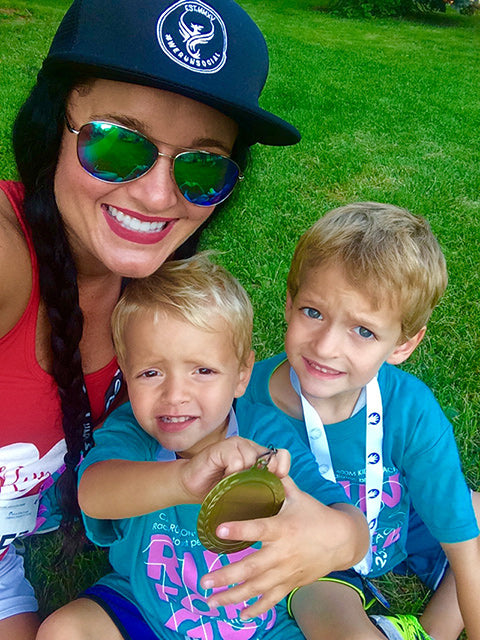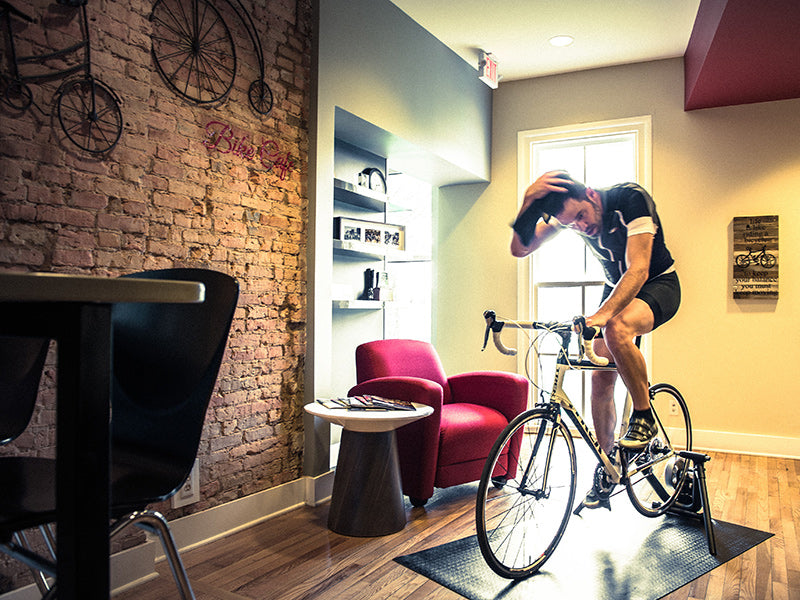By: Bob Seebohar, MS, RD, CSSD, CSCS, METS II
Nutrition can be quite confusing for the beginning cyclist. There are countless fad diets, sports nutrition products, and "expert" advice floating around. Go on a group ride and you will hear conflicting stories of what nutrition plans and products work, and don't work, for different cyclists.
The most important thing to realize before jumping into this article is that each person is different due to age, gender, upbringing, and weight/body composition goals, to name a few.
Sport nutrition is the blend of daily nutrition and training nutrition. Daily nutrition is a very important piece of the puzzle as it sets up your training nutrition strategies. Daily nutrition is where you should place most of your time and resources as it requires changing a behavior. This alone could take months. Let's get into the important aspects of this particular aspect of sport nutrition.
Daily Nutrition
The cornerstone of improving health and performance lies in what goes in your body on a consistent, day-to-day basis. The best thing to do is to not follow a diet but rather a daily nutrition plan that can adapt to your lifestyle and training fluctuations.
Your primary goal is to follow a daily nutrition plan that focuses on controlling and optimizing blood sugar. You will accomplish this through balancing the macronutrients (carbohydrate, protein, and fat) you consume throughout the day.
I package this into the concept that I created over 12 years ago, Metabolic Efficiency™️. This concept describes the relationship of how efficient you use your stored carbohydrate and fat calories that you have in your body for energy.
The recreational cyclist will likely store in upwards of 80,000 calories as fat in their body but only 1,200 - 2,000 calories as carbohydrate (the range is due to gender and muscle mass differences). Because of this large discrepancy, the goal is to teach the body to use more of the almost unlimited fat stores and preserve the carbohydrate stores until you really need them.
By improving your body's Metabolic Efficiency to use more fat as energy, you not only improve certain health markers (decreased risk for some disease states) but you can also lose weight and body fat, sleep better, and recover faster. The great thing about this is that there are no supplements you have to buy as it can all be done through food.
Remember the equation Protein + Fat + Fiber as this is how you will improve your daily nutrition, which again, has the goal of improving your body's Metabolic Efficiency through controlling and optimizing blood sugar.
Implementing this on a daily basis is easier than you are likely thinking. Because it is not a diet, there are no restrictions (unless you have food allergies, intolerances, or specific health concerns). It is as simple as choosing food that contains protein, fat and fiber at most meals and snacks. If you can do this 90% of the time, you will be off to a great start! Allow the other 10% as, what I term, "misses." This will help you develop a healthy relationship with food.
Start by making a list of the type of foods you enjoy that fall in the following categories:
| Protein/Fat | Vegetables | Fruit | Whole Grains | Misses |
You can download a free Metabolic Efficiency start up guide with sample food lists at www.metabolicefficiency.org.
Once you have a running list going, you then choose foods to eat from the left to the right as you put together a meal or a snack. For example, chicken (protein and fat) with asparagus (vegetable), is a great meal that will control and optimize your blood sugar. Don't feel like you have to eat a food from all five columns. The most important are the first four.
Remember, combine a food that has protein with one that has fiber and one that has fat, and you will be on your way to controlling your blood sugar and becoming metabolically efficient.
Training Nutrition
What to eat before, during, and after a ride can be a bit trickier than your daily nutrition. I know it may sound like it would be easier but remember, your daily nutrition sets up what you need (or don't need) on the bike.
The normal recommendations from sports nutrition research are to eat something about 1-2 hours before you hop on your bike, then every 20-30 minutes on the bike if you ride longer than one hour, then immediately eat something within 30-60 minutes when you get done with your ride. Well, as it is quite frequently in the sports nutrition world, much of this depends on you and your daily nutrition.
Here are a few examples that will help explain this.

1.You wake up early to get a 1 hour aerobic (zone 1-2) ride in before work.
This is a tricky one because it is first thing in the morning, you wake up in a fasted state, and the ride is only one hour in duration.
What is usually recommended for a ride like this is to assess your hunger when you first wake up. If you are biologically hungry (stomach grumbling), then have something small like a spoonful of nut butter or a palmful of almonds and a small amount of water. You really don't need much since the duration is not over one hour and the intensity is low. Then, eat a nice, metabolically efficient breakfast after you clean up post-ride.

2. You are going to go out with some friends during your lunch break, on a 1.5-hour hilly ride.
The duration and intensity (hills) make this a bit more challenging but in general, it would be good to have a metabolically efficient, mid-morning snack about 1 hour before this ride, and have water and possibly electrolytes during the ride. Immediately after the ride, try to eat lunch since almost three hours will have passed.

3. It's the weekend and you are going to head out for a long group, aerobic ride (2-3 hours) first thing in the morning.
If you can eat a little for breakfast, that would be preferred. It doesn't have to be much but enough to satisfy your morning hunger. Because this is a longer ride, carry some calories (homemade energy bars, nuts, food based energy bars, etc.) with you during the ride and snack on them every 30-45 minutes with about a half bottle of water. During a lower intensity ride, it is usually easier to eat real food.

4. You are doing a 90-minute interval ride at night after work but before dinner.
Go into this ride fueled by an afternoon snack and consider having a sports drink with you on the bike during the interval session if it has been more than 2-3 hours since your afternoon snack. Because the intensity is higher, your body may need a few extra calories to be able to sustain the intensity of the intervals. Then, head to dinner after you get cleaned up.
I hope you realize from these examples that you can use meals and snacks (daily nutrition) as your pre/post ride option most of the time. It is always best to look to real food first then sports nutrition products when they are needed.
Aim to develop good metabolic efficiency in your daily nutrition and then focus on the timing aspect of meals and snacks before and after your rides. Have a great Spring!

He was previously the Director of Sport Nutrition for the University of Florida and a Sport Dietitian for the U.S. Olympic Committee where he was the Team USA Sport Dietitian at the 2008 Olympic Games in Beijing, China.
Contact him at bob@enrgperformance.com or visit www.enrgperformance.com.
